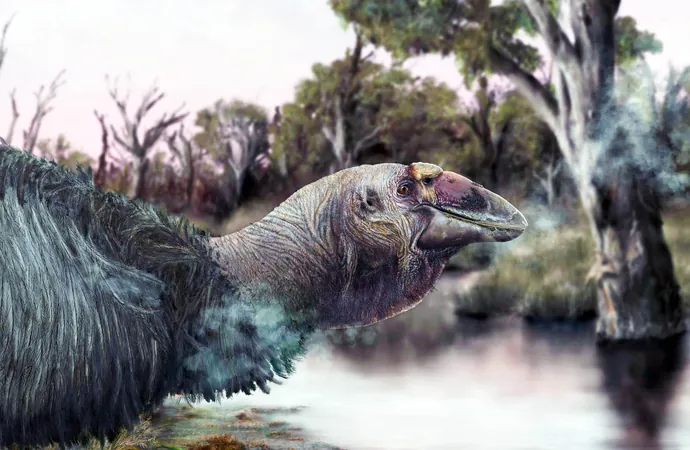
BepiColombo's Sixth Mercury Flyby: Unveiling the Secrets of the Solar System's Innermost Planet
2025-01-09
Author: Daniel
Introduction
On January 8, 2025, the BepiColombo mission—an ambitious collaboration between the European Space Agency (ESA) and the Japan Aerospace Exploration Agency (JAXA)—successfully executed its sixth flyby of Mercury.
This critical maneuver, known as the "gravity assist," is essential for placing the spacecraft into orbit around Mercury in late 2026.
During this flyby, the spacecraft skimmed an astonishing 295 kilometers above Mercury's north pole, providing unprecedented close-up views of the planet's surface.
Captivating Images of Mercury
The images captured during the flyby highlight Mercury's unique features, including intriguing craters that may contain frozen water, despite being the closest planet to the Sun.
The BepiColombo mission's monitoring cameras (M-CAMs) provided stunning visuals, revealing the stark contrast between sunlit plains and the shadowy depths of craters.
These icy craters, such as Prokofiev and Kandinsky, have floors that remain shrouded in darkness, making them some of the coldest locations in the Solar System.
Volcanic Landscapes
One of the most striking images shows Mercury's vast volcanic plains, known as Borealis Planitia.
These expansive, smooth surfaces were formed billions of years ago from extensive lava flows that reshaped existing craters like Henri and Lismer.
The geological history unveiled by the M-CAMs suggests that Mercury has undergone significant cooling and contraction over time, shaping its rugged landscape.
Formation Processes and Geological Features
Furthermore, the imagery captured during this encounter sheds light on the formation processes that led to the bright features on Mercury's surface.
Bright material is often indicative of younger geological formations, with both volcanic activity and impacts contributing to this stark contrast.
The Nathair Facula, for instance, is the result of explosive volcanic activity, while the relatively young Fonteyn crater, formed about 300 million years ago, displays bright debris radiating from its impact site.
Looking Ahead
As the mission progresses, scientists are eager to explore the data from this flyby to unravel more of Mercury's mysteries.
Frank Budnik, BepiColombo's Flight Dynamics Manager, reflected on the mission's success, noting, "This flyby happens a bit more than a month after the previous one...everything proceeded smoothly and flawlessly."
Geraint Jones, the project scientist, emphasized that the information gathered is invaluable for understanding this little-explored planet.
Conclusion
Launched on October 20, 2018, BepiColombo is Europe's first mission dedicated to studying Mercury.
After its arrival in late 2026, the mission will separate into two orbiters—the Mercury Planetary Orbiter and the Mercury Magnetospheric Orbiter.
Both will commence scientific operations in early 2027 and are set to contribute extensive data over the course of their mission.
Join the excitement as we eagerly anticipate the wealth of knowledge BepiColombo is destined to reveal about Mercury, our enigmatic neighbor!


 Brasil (PT)
Brasil (PT)
 Canada (EN)
Canada (EN)
 Chile (ES)
Chile (ES)
 Česko (CS)
Česko (CS)
 대한민국 (KO)
대한민국 (KO)
 España (ES)
España (ES)
 France (FR)
France (FR)
 Hong Kong (EN)
Hong Kong (EN)
 Italia (IT)
Italia (IT)
 日本 (JA)
日本 (JA)
 Magyarország (HU)
Magyarország (HU)
 Norge (NO)
Norge (NO)
 Polska (PL)
Polska (PL)
 Schweiz (DE)
Schweiz (DE)
 Singapore (EN)
Singapore (EN)
 Sverige (SV)
Sverige (SV)
 Suomi (FI)
Suomi (FI)
 Türkiye (TR)
Türkiye (TR)
 الإمارات العربية المتحدة (AR)
الإمارات العربية المتحدة (AR)